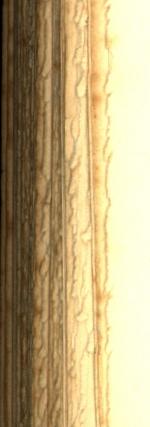91
I
CHAPTER XV
THE IRISH WOLFHOUND
IT is now some thirty-years since an important controversy was carried on in the columns of The Live Stock journal on the nature and history of the great Irish Wolfhound. The chief disputants in the discussion were Captain G. A. Graham, of Dursley, Mr. G. W. Hickman, Mr. F. Adcock, and the Rev. M. B. Wynn, and the main point as issue was whether the dog then imperfectly known as the Irish Wolfdog was a true descendant of the ancient Canis grains Hibernicus, or whether it was a mere manufactured mongrel, owing its origin to an admixture of the Great Dane and the dog of the Pyrenees, modified and brought to type by a cross with the Highland Deerhound. It was not doubted-indeed, history and tradition clearly attested-that there had existed in early times in Ireland a very large and rugged hound of Greyhound form, whose vocation it was to hunt the wolf, the red deer, and the fox. It was assuredly known to the Romans, and there can be little doubt that the huge dog Samr, which Jarl Gunnar got from the Irish king Myrkiarton in the tenth century and took back with him to Norway, was one of this breed. But it was supposed by many to have become extinct soon after the disappearance of the last wolf in Ireland, and it was the endeavour of Captain Graham to demonstrate that specimens, although admittedly degenerate, were still to be found, and that they were capable of being restored to a semblance of the original type.
At the time when he entered into the controversy, Captain Graham had been actively interesting himself for something like a score of years in the resuscitation of the breed, and his
9o
patience had been well rewarded. By the year 1001 the Irish Wolfhound had been practically restored, although it has taken close upon a quarter of a century to produce the magnificent champions Cotswold and Cotswold Patricia, those brilliant examples of the modern breed-a brace of Wolfhounds who bear testimony to the vast amount of energy and perseverance which Captain Graham and his enthusiastic colleague Major Garner displayed in evolving from rough material the majestic breed that holds so prominent a position to-day.
There is little to be gathered from ancient writings concerning the size and appearance of the Irish Wolfhounds in early times. Exaggerated figures are given as to height and weight ; but all authorities agree that they were impressively large and imposing dogs, and that they were regarded as the giants of the canine race.
It seems extraordinary that so little should have been accurately known and recorded of a dog which at one time must have been a familiar figure in the halls of the Irish kings. It was no mere mythical animal like the heraldic griffin, but an actual sporting dog which was accepted as a national emblem of the Emerald Isle, associated with the harp and the shamrock.
As regards the origin of the Irish Wolfhound, more than one theory is advanced. By some authorities it is suggested that it was the dog which we now know as the Great Dane. Others hold that as there were rough-coated Greyhounds in Ireland, it is this dog, under another name, which is now accepted. But probably the late Captain Graham was nearer the truth when he gave the opinion that the Irish hound that was kept to hunt wolves has never become extinct at all, but is now represented in the Scottish Deerhound, only altered a little in size and strength to suit the easier work required of it-that of hunting the deer. This is the more probable, as the fact remains that the chief factor in the resuscitation o£ the Irish Wolfhound has been the Scottish Deerhound.

